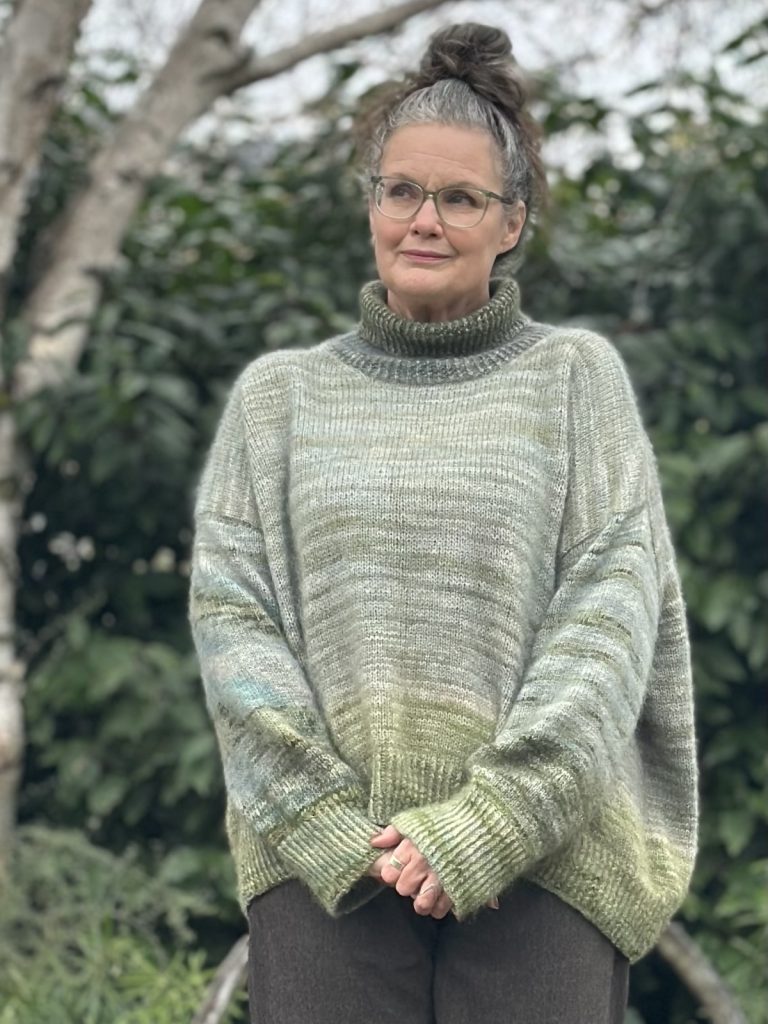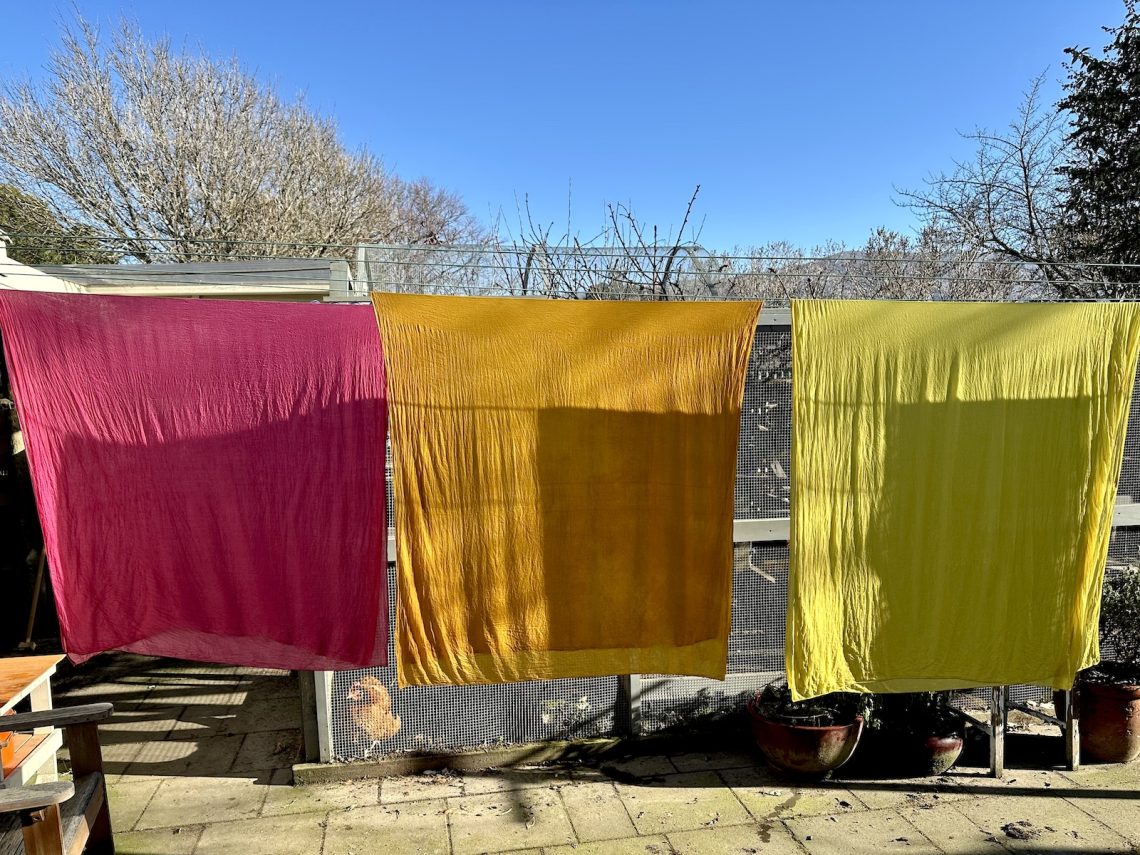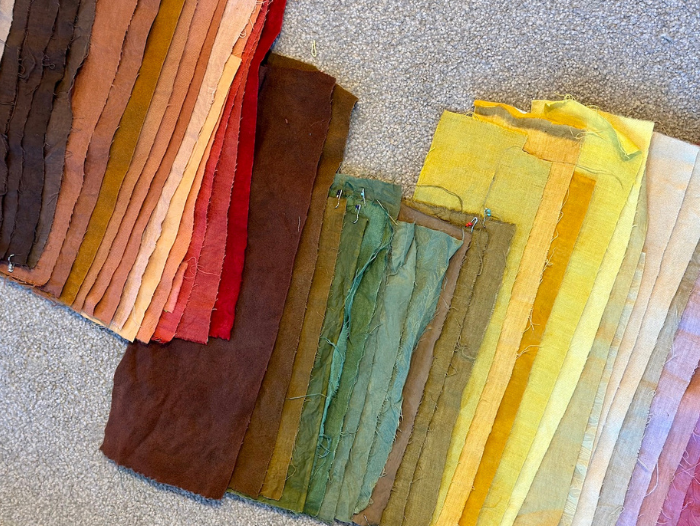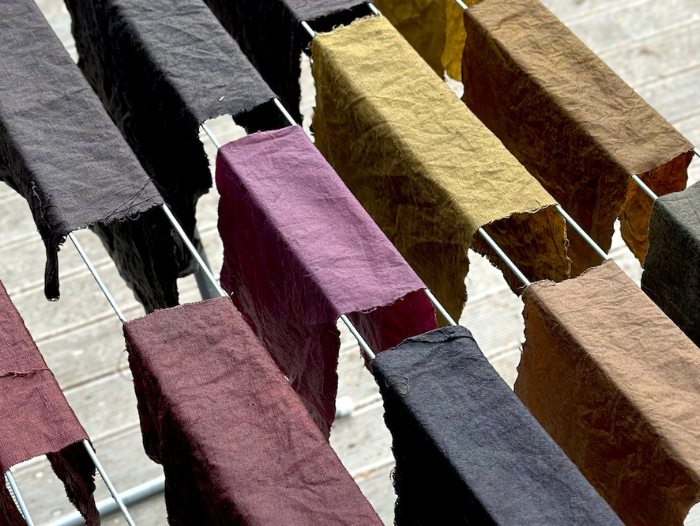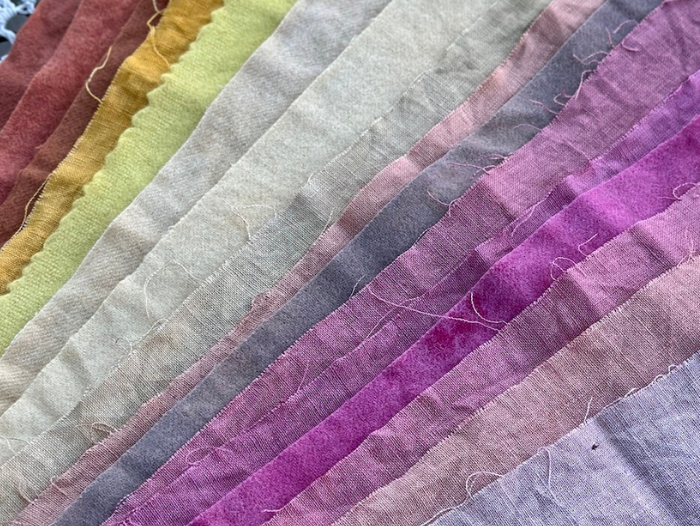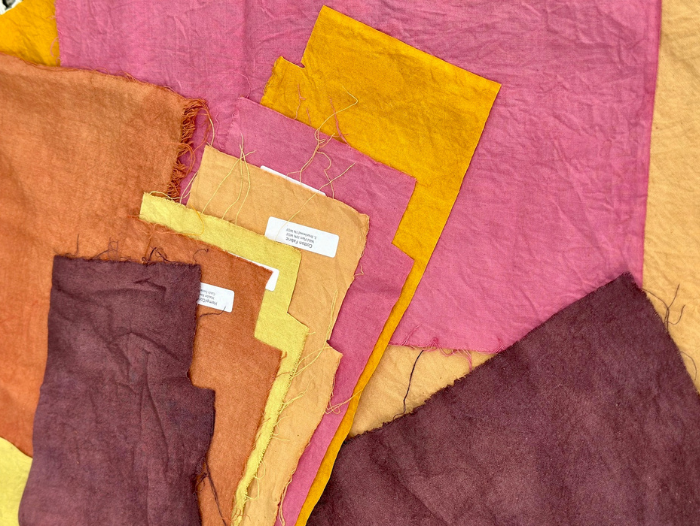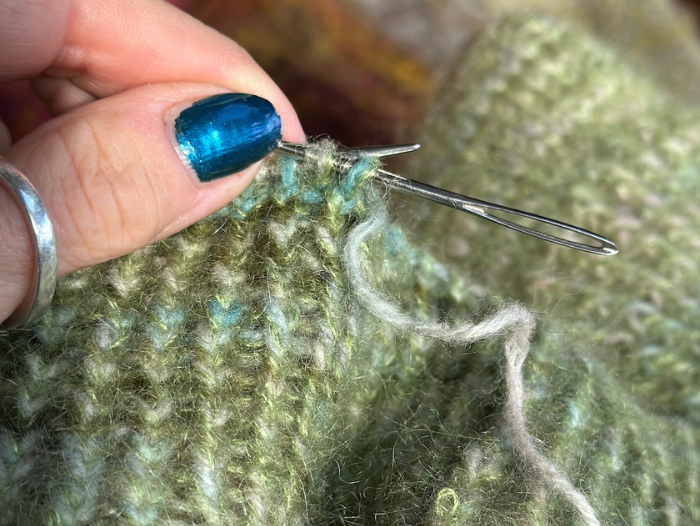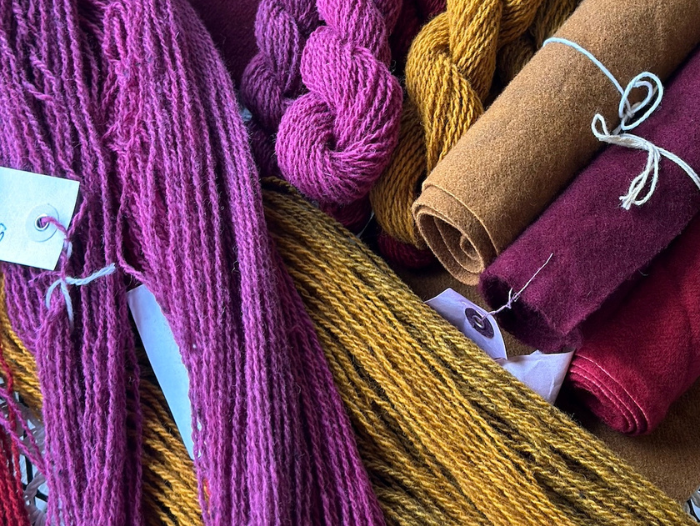The final lesson in the Natural Dye school is Indigo. This was probably the lesson I was most looking forward to. Indigo dyeing is a very long journey, I know that. But in order to start you need the basics of creating some sort of vat and how to achieve depth of colour.
I made a banana vat! I bought 3kgs of bananas about 2 weeks prior and let them sit outside. I tried to buy ugly brown spotted ones. I don’t think it really matters but 1) why waste yummy good bananas and 2) squishy icky bananas are easier to mash. First I cooked up the bananas and mashed them in the water. Maybe 30 minutes or so. Then when suitable mashy looking I strained the water into my future Indigo vat – I am using a 30L stainless steel pot. I saved the banana mash with some water in another 20L stainless pot for future use. Then I added fine Indigo powder and stirred to combine, over low heat. Then came the Calx, still on low heat, and stirring for 10 minutes or so. A flower was started to form. I tested the pH (11), covered and left overnight.
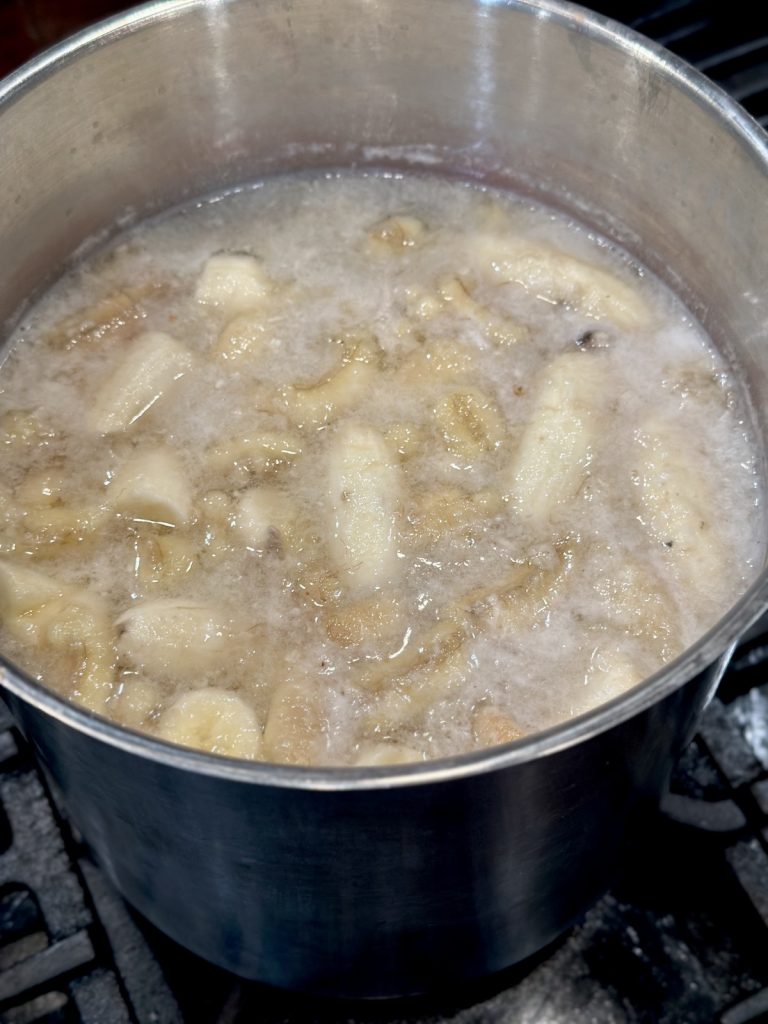
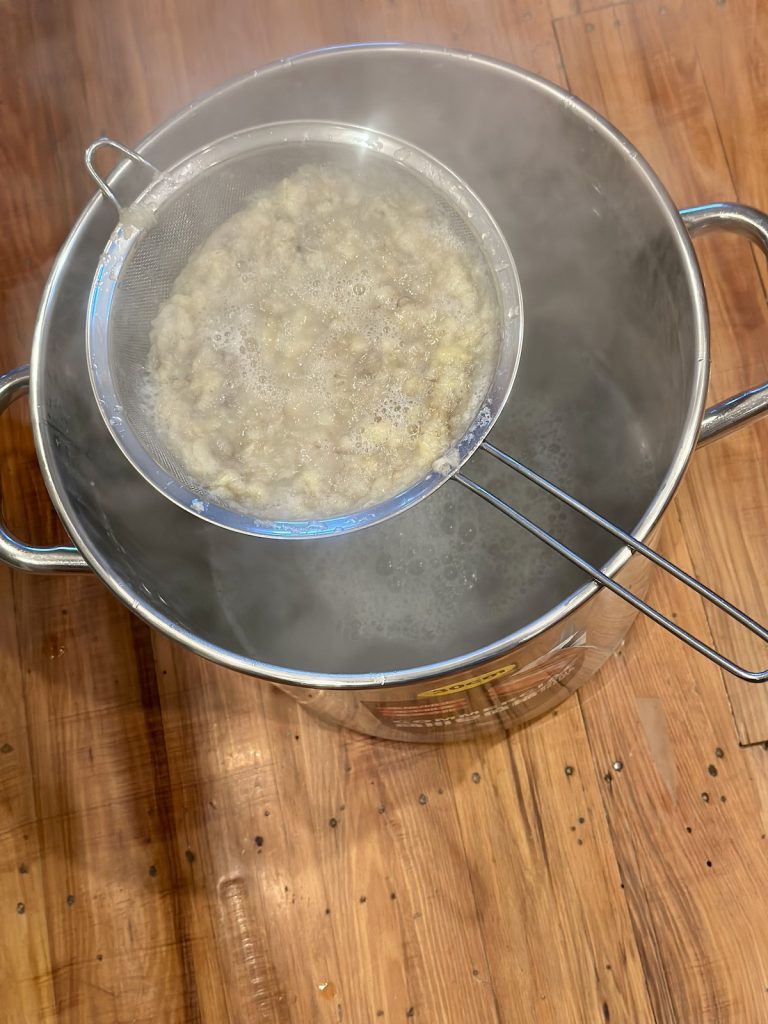
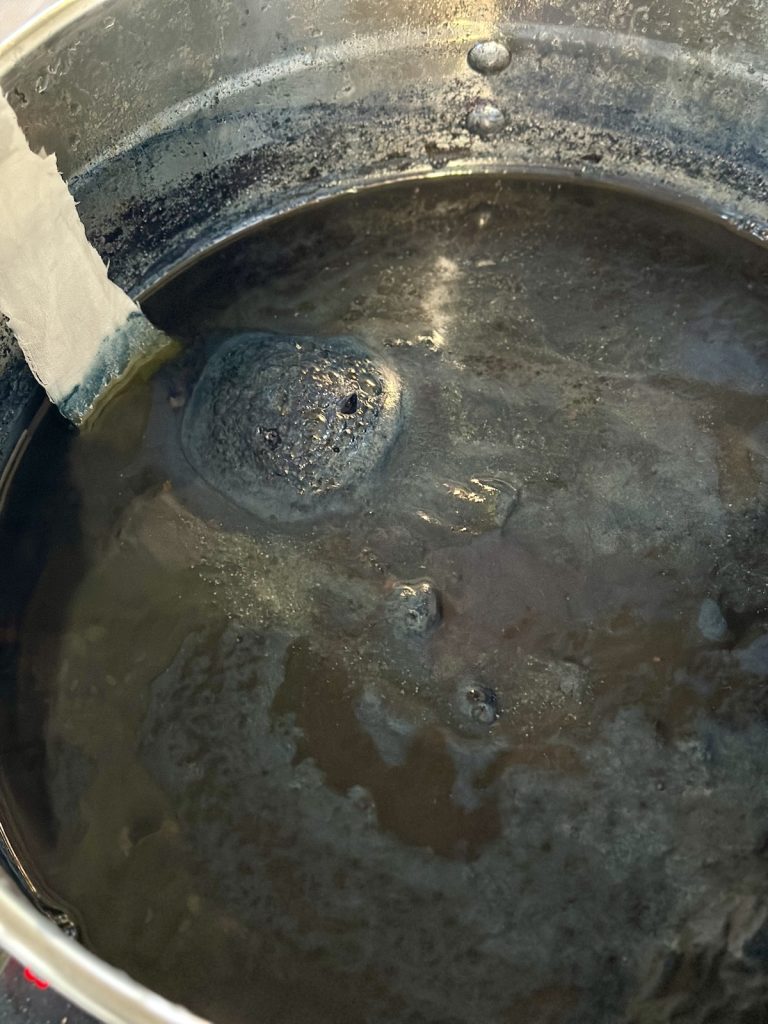
The next day I put on heat (still very cold outside in my not-yet-finished dye studio) and gave it a stir. Let that settle and dipped a test strip of fabric for 5 minutes. When you “dye” Indigo you are actually “dipping”. So placing the fibres in the vat for a certain amount of time (1 min – 5 min, or even more). Continuous dips give deeper colour. First up were undyed cellulose and protein fibres for pure blue. The first lot was dipped for 4 minutes. Later, after all the other dipping, I did another 4 min dip on half of the cloth.
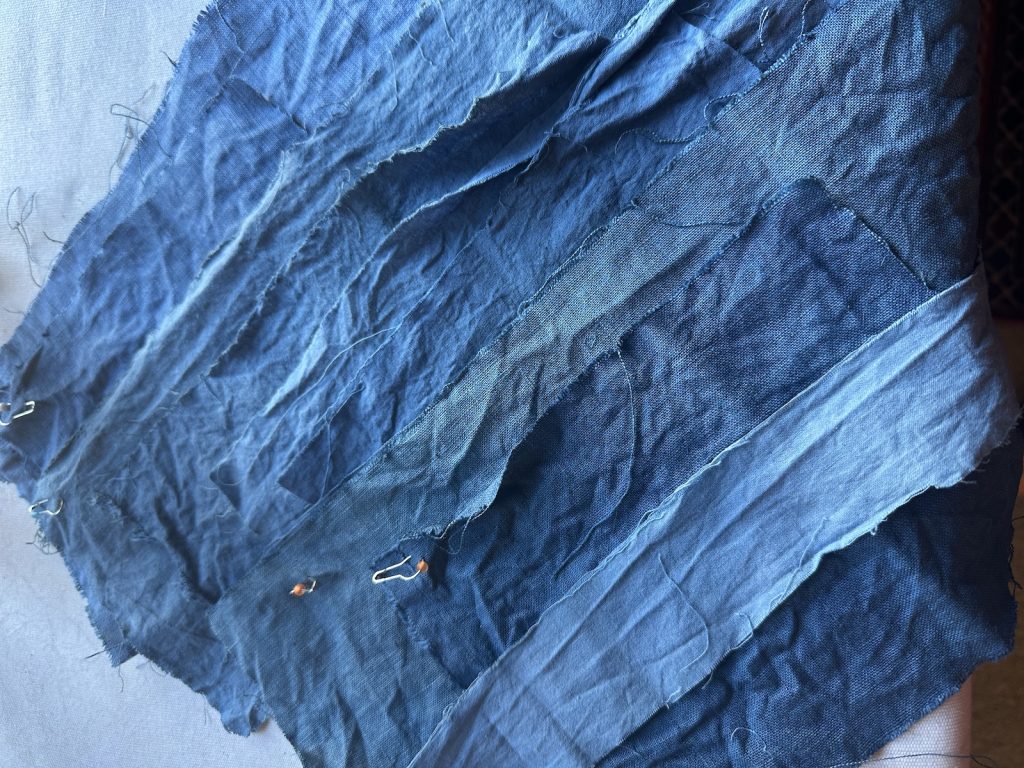
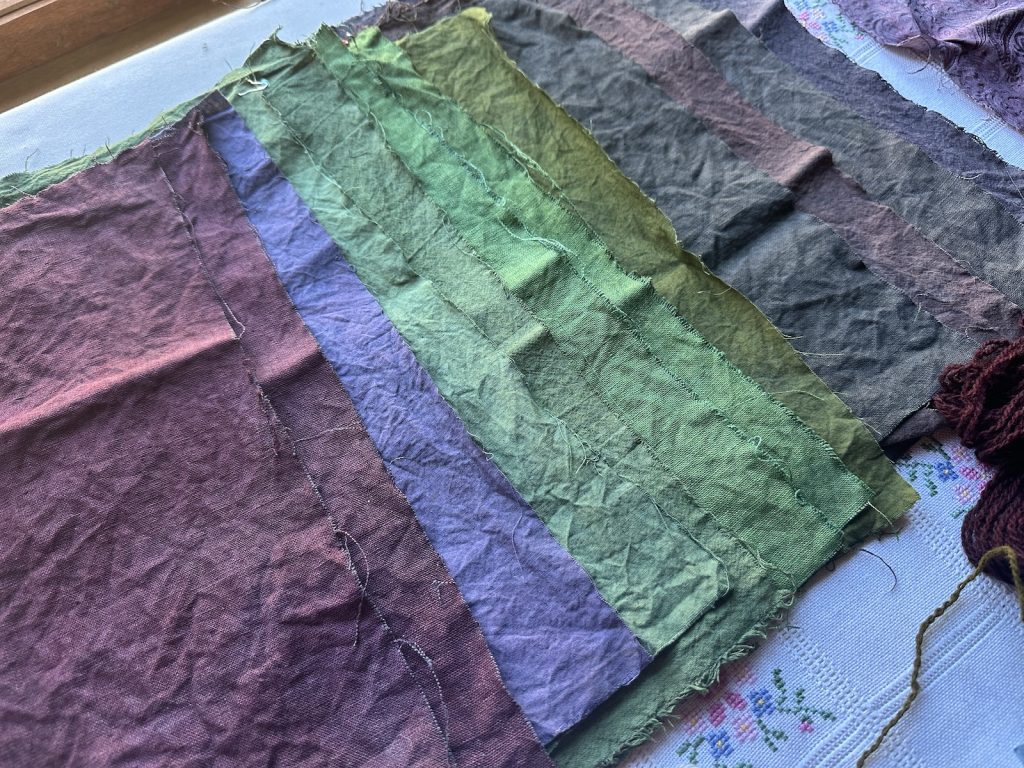
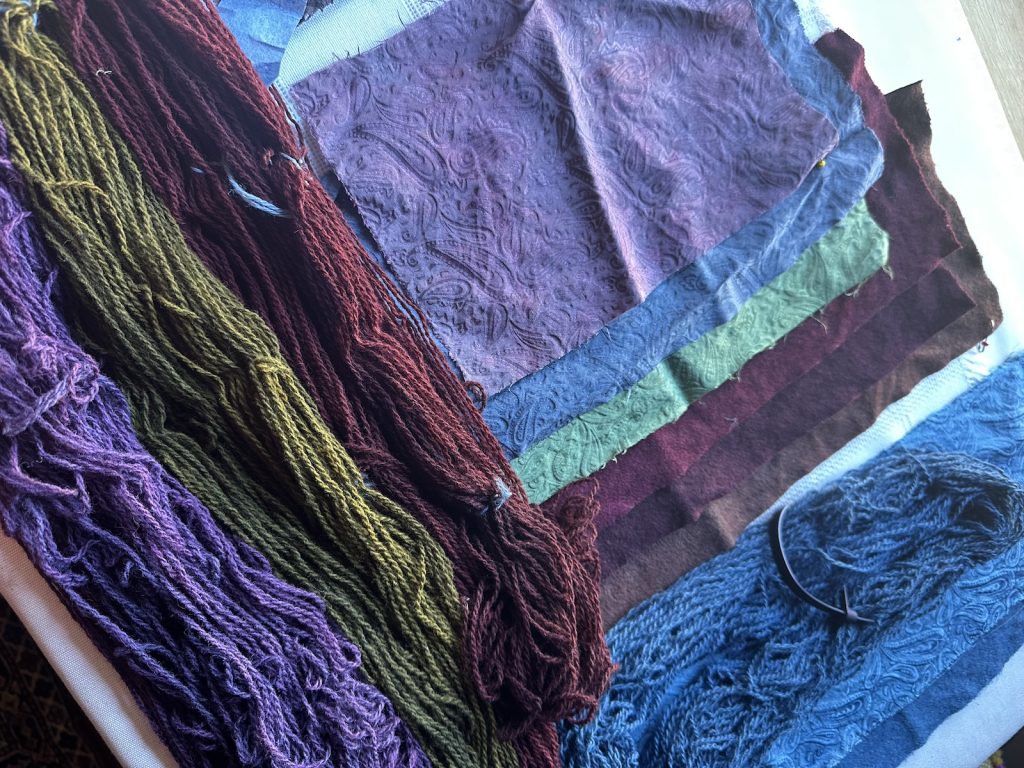
I am mainly using all the pieces from the Exhaust bath dyeing. So heaps of yellows, red, browns. Then over-dyeing/dipping them for between 2-4 minutes. Just once. After doing all the cellulose pieces I checked the pH and it was down to around 10.5, so ready for the proteins. Wools need a lower pH on Indigo. This is something I will need to pay heed to going forward when I feed my vat. I plan on mainly dipping Merino and wool yarns, and some cotton muslins.
Love all the green tones, and of course the Indigo blues. On the next day I dipped a hank of NZ wool twice, then feed the vat with some more banana mash. Covered and put it off to the side. I have checked in the meantime and the pH is still at a good 11 level. Mainly because it is cold outside, I think. An Indigo vat can live for months (even years) but you do need to check it and feed it. That is something that can easily get forgotten!
For all those following, I finally finished Sweater 11 from My Favourite Things. I honestly cannot believe how long it took me to knit that jumper. It is purposely oversized and very slouchy. Hand dyed possum Merino and silk mohair – so it is like wearing a cloud.
If you really want to know all the ends and outs, you can read my project on Ravelry.
